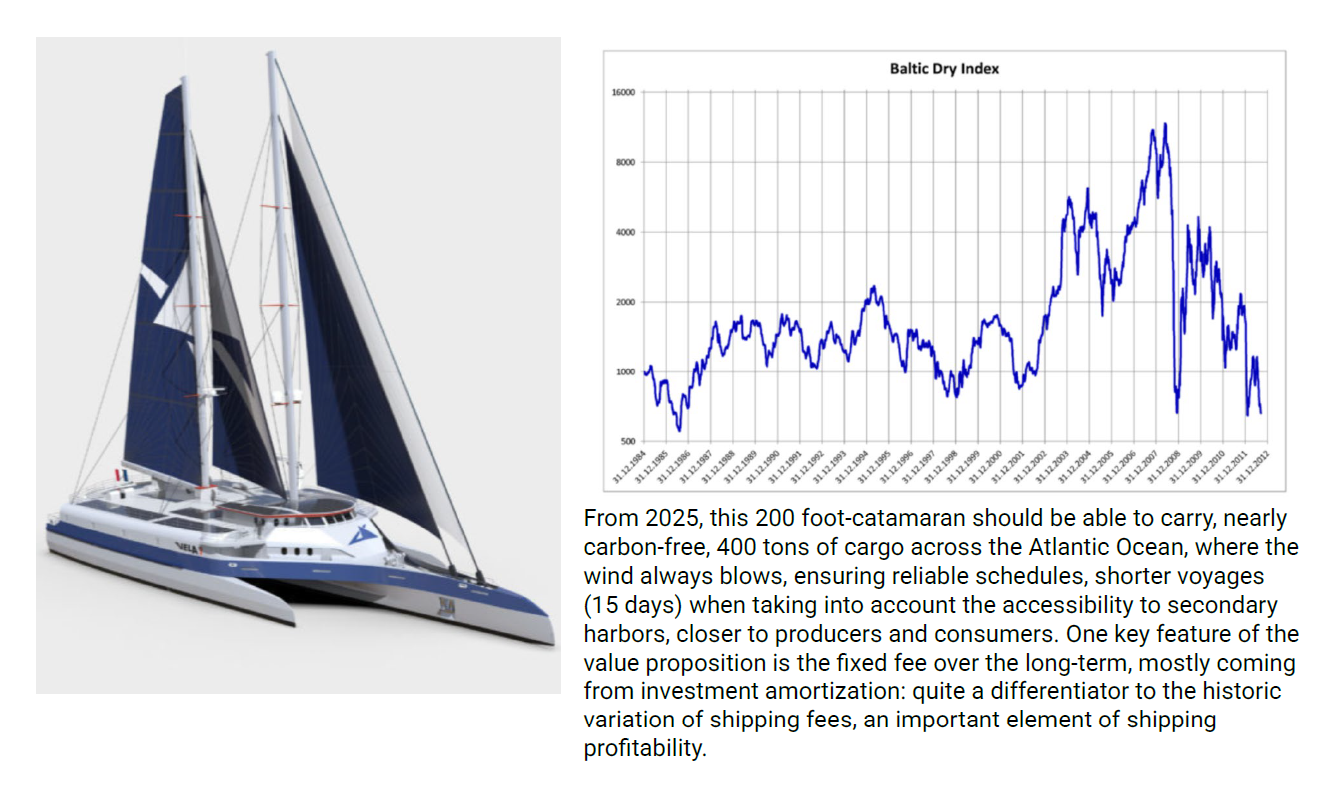

The energy transition will most likely rely on a diversity of solutions, breaking the hegemony of the three fossil sources, coal, oil and gas, that fueled the ever-increasing global growth in the 19th and 20th centuries. One of the drivers for this growth was the diminishing cost of the energy, made possible by the expansion of geographies where they could be mined or drilled for and the improved productivity along the supply chains. If we want the energy transition to be a success for all, avoid growing inequalities from a less affordable access to energy, we have to keep the cost of the alternative energies as low as possible, quite a challenge when they do not feature one basic quality of fossil, energy density.
Sun and wind come immediately to mind, providing free energy to collect and transform, at a cost, into usable energy. So far, electricity generation has been the focus, but wind also finds its way in shipping, in a sort of Back to the Future twist. One of the innovative start-up companies promoting wind-propelled commercial ships is Vela, co-founded by the present record-owner of the globe circumnavigation, single-handed and by sail only, François Gabart:
 Securing a fixed, at least stable, long-term price for transport gives a lot of visibility and comfort to the end-user, especially when energy is a significant element of the cost structure.
Securing a fixed, at least stable, long-term price for transport gives a lot of visibility and comfort to the end-user, especially when energy is a significant element of the cost structure.
Another example of such de-risking: the use of Miscanthus, also called elephant grass, a rustic and perennial (20-25 years once planted) energy vegetal, which requires hardly any fertilizer and can depollute the soil, in a village in Alsace, in the East of France, for communal energy generation. The 10-year contract is signed between the village authorities and local farmers, who deliver the energy grass, ready for use in communal furnaces, at a fixed price, 100 Euros per ton. This may not look cheap, as the biomass standard price in many studies is deemed around 50 Euros per ton, but ask the villagers what they think about the variation of the price of natural gas in 2022 (30 Euros per MWh now, 345 a year ago), which they did not suffer from, and think in terms of the impact on the local economy, supplying fixed and recurrent revenues to farmers, not the richest working population in European rural areas.
Such examples show the key benefits of the bioeconomy, reducing CO2 emissions, improving energy security, boosting local economies. Scale cannot be the objective here (no wind-propelled super-tanker, yet), but myriads of local solutions, based on cheap available resources, easier to finance, can be a nice complement to capital-intensive mega-projects like the electrification of mobility across a continent.
Philippe Marchand is a Bioenergy Steering Committee Member of the European Technology and Innovation Platform (ETIP).